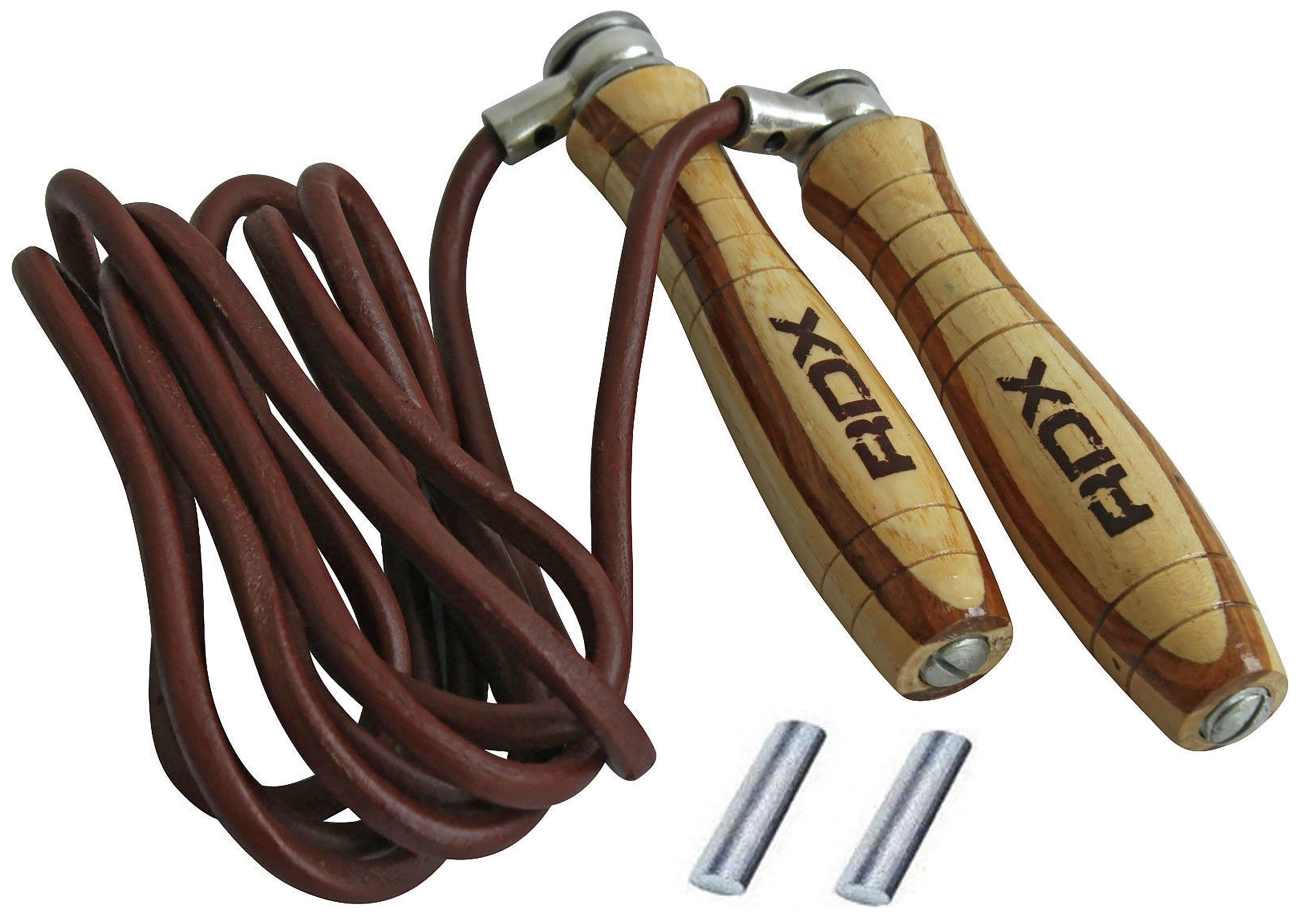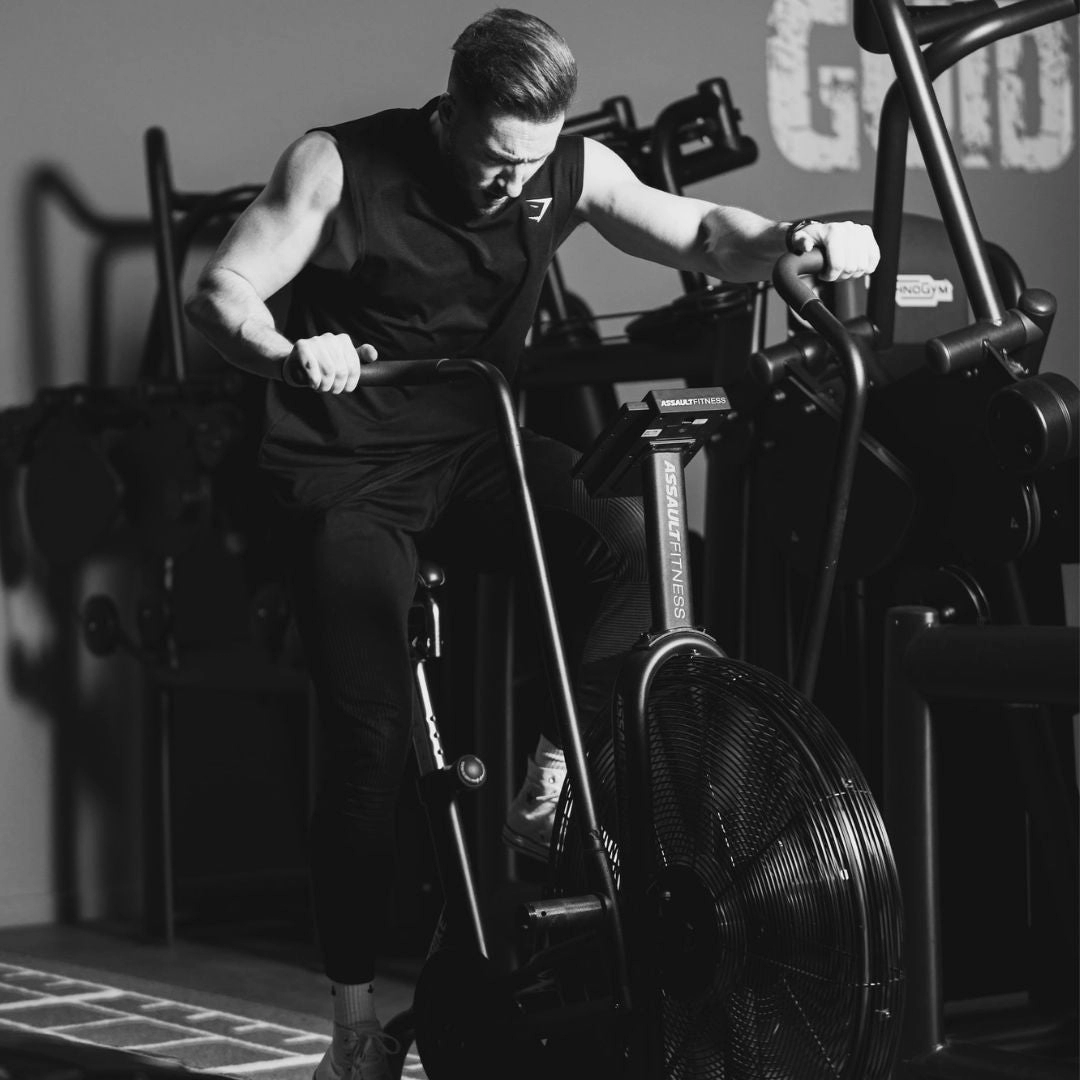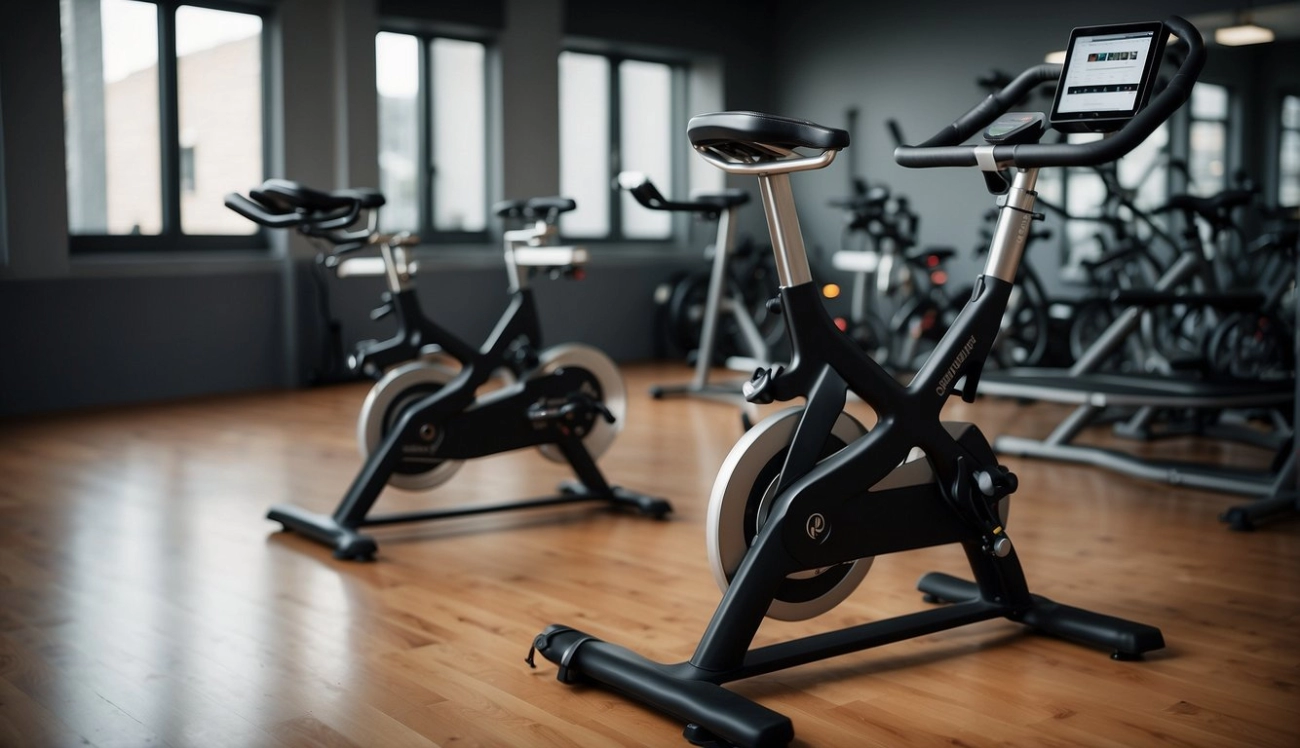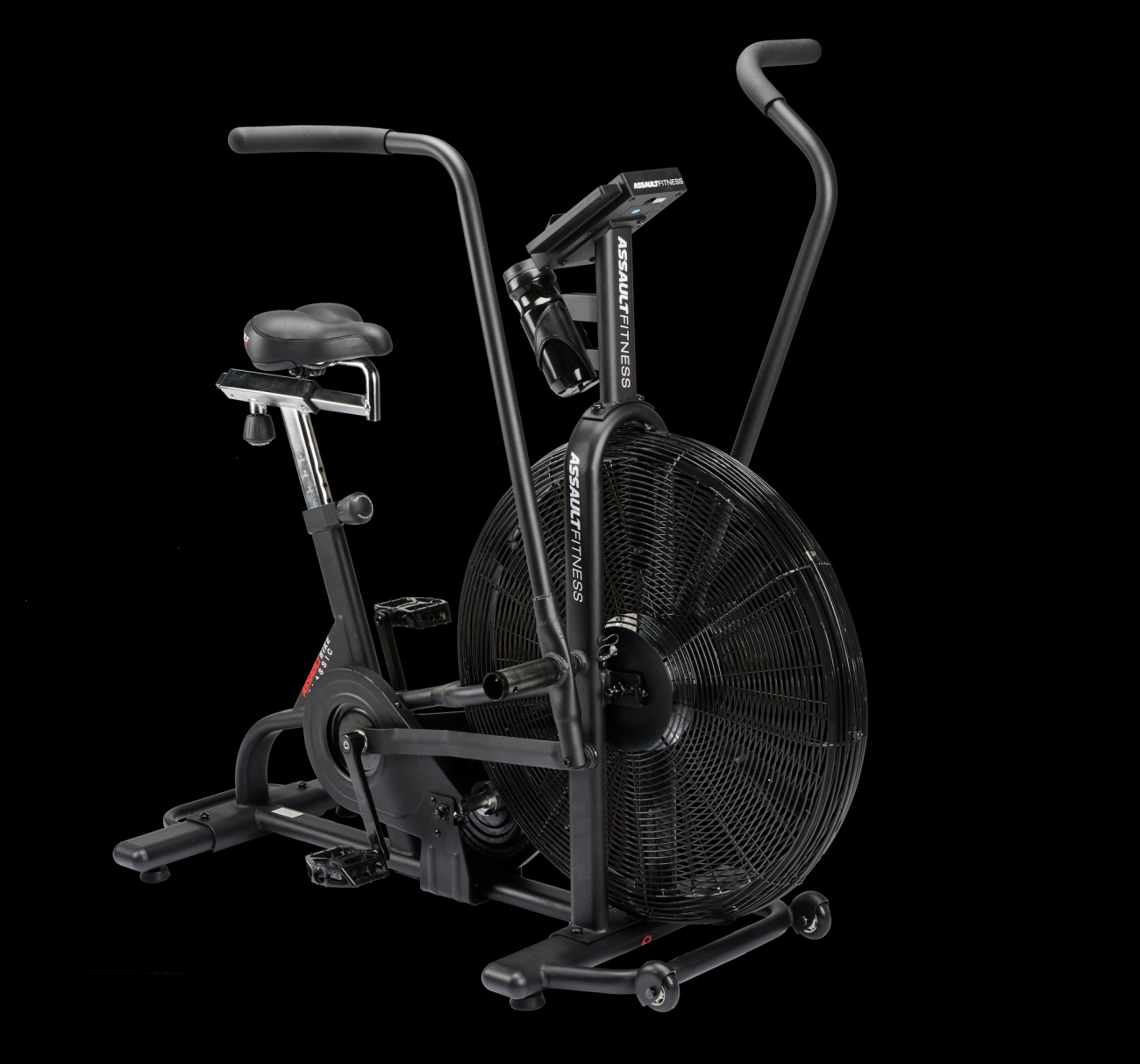What is an Assault Bike
An Assault Bike is a powerful piece of cardio workout equipment designed to deliver a high-intensity, full-body exercise. Known for its distinctive fan wheel and durable frame, the Assault Bike combines upper and lower body motion, making it a popular choice among athletes and fitness enthusiasts looking for efficient calorie burn and endurance training.
Description and Features of an Assault Bike
The Assault Bike features dual-action handles that move back and forth in sync with the pedals. This setup engages both your arms and legs simultaneously, providing a comprehensive workout that goes beyond simple cycling. The fan wheel creates resistance that increases with your effort—meaning the harder you push, the tougher it gets. Unlike traditional stationary bikes, resistance here is self-regulated by your input, which makes it excellent for various intensity levels. The seat is adjustable to accommodate different heights, and the bike’s robust construction supports intense, long-lasting workouts without compromising stability.
How the Assault Bike Works
What sets the Assault Bike apart is its dual-action system:
- Pedals power the fan for leg workout
- Moving handles engage the upper body including arms, shoulders, and core
- The fan wheel resistance scales with your speed, offering smooth yet challenging resistance that adapts in real-time
This means every push demands total-body engagement, making it a favorite for functional fitness and cross-training workouts.
Common Uses of the Assault Bike
The Assault Bike is extremely versatile and excels in several fitness areas:
- High-Intensity Interval Training (HIIT): Quick bursts of max effort with short rests to spike heart rate and burn maximum calories
- Endurance Training: Longer sessions at steady pace build cardiovascular fitness and stamina
- Recovery Workouts: Low-intensity rides assist in active recovery by increasing blood flow without stressing muscles too much
Its ability to switch seamlessly between high-intensity and moderate effort makes it a valuable tool for athletes, trainers, and anyone serious about a full body, fat-burning workout.
the Assault Bike blends intense cardio, muscle engagement, and functional movement into a compact machine that challenges your entire body while improving endurance and strength simultaneously.
Next up, we’ll dive into how skipping rope stacks up as a cardio workout and why it’s gaining worldwide popularity.
What is Skipping Rope Cardio Workout Equipment

Skipping rope is one of the simplest yet most effective cardio workout tools you can use anywhere. It involves repeatedly jumping over a rope swung under your feet and over your head. Despite its simplicity, skipping rope offers a dynamic, full-body workout that helps build endurance, coordination, and fat loss.
Types of Skipping Ropes
There are several types of skipping ropes to fit different fitness goals and skill levels:
- Speed Ropes: Lightweight and fast, designed for quick rotations and advanced moves like double unders.
- Weighted Jump Ropes: Heavier ropes that add resistance, increasing muscle engagement and calorie burn.
- Basic PVC Ropes: Affordable and durable, ideal for beginners and general cardio workouts.
- Beaded and Leather Ropes: Often used for rhythm and timing, popular in schools and fitness classes.
You can find options like the PVC Plastic Skipping Rope or the Heavy Skipping Rope tailored to different workout intensities.
How Skipping Rope Fits Into Cardio Workouts
Skipping rope fulfills cardio workouts by combining high-intensity aerobic exercise with coordination training. It raises your heart rate quickly and can be incorporated into HIIT, steady-state cardio, or warm-ups. The consistent jumping motion challenges your cardiovascular system while improving timing, balance, and rhythm.
Popularity and Accessibility of Skipping Rope
Skipping rope’s popularity worldwide is driven by its affordability, portability, and versatility. You don’t need a gym or lots of space — just a flat surface. It’s widely used in boxing, CrossFit, and general fitness routines across the U.S.
Because skipping ropes are so portable and inexpensive compared to bulky machines like Assault Bikes, they’re a favorite for home gyms, outdoor workouts, and on-the-go training.
With its diverse types and broad accessibility, skipping rope remains one of the best cardio workout equipment choices for anyone looking to burn calories and improve fitness without a big investment.
Calorie Burn and Fat Loss Potential Comparison

When it comes to cardio workouts, calorie burn is a key factor for anyone focused on weight loss and fat burning. Both the Assault Bike and skipping rope are excellent options, but they perform differently depending on how you use them and your workout intensity.
Assault Bike Calorie Burn Estimates
The Assault Bike is known for its high-intensity cardio sessions that engage both upper and lower body muscles simultaneously. Because of this, it can burn a significant number of calories in a short time.
- Average burn: About 10-15 calories per minute for most users.
- In a 20-minute HIIT session, you might burn between 200-300 calories.
- The calorie burn depends heavily on intensity and resistance settings. Pushing hard in intervals boosts fat loss.
- Ideal for those looking for a full-body workout with a heavy focus on endurance and strength.
Skipping Rope Calorie Burn Estimates
Skipping rope also burns a high number of calories but is influenced by factors like speed, duration, and skill level.
- A beginner might burn around 8-10 calories per minute.
- Experienced jumpers can reach 12-15 calories per minute by doing faster or complicated moves like double unders.
- Longer sessions (15-30 minutes) help maintain a steady calorie burn useful for fat loss.
- Skipping rope’s fat loss edge comes from its high-intensity bursts combined with aerobic endurance.
Fat Loss Effectiveness Comparison
- Both tools are excellent for fat loss, but the choice depends on your workout style and physical ability.
- Assault Bike offers a lower impact but intense workout, so it’s ideal for those who want a controlled challenge with less risk of joint stress.
- Skipping rope demands good coordination and rhythm, providing a calorie burn that’s comparable but with a different intensity that also improves agility and footwork.
- For maximum fat loss, mixing both into your routine can keep your body guessing and promote consistent progress.
Bottom line: If you want a powerhouse fat-burning workout that challenges the whole body, the Assault Bike is a solid pick. But if you’re looking for something portable, fun, and calorie-torching, skipping rope delivers great results especially when you increase speed and duration.
Muscle Engagement and Full Body Workout for Assault Bike vs Skipping Rope
When comparing muscle engagement in the Assault Bike vs skipping rope debate, both offer solid full-body workouts but differ in how they target your muscles and improve overall fitness.
Muscle Groups Targeted by the Assault Bike
The Assault Bike uses dual-action handles and pedals that move simultaneously, creating a full-body resistance workout. Here’s what you get:
- Legs: Quads, hamstrings, calves, and glutes power every pedal stroke.
- Arms: Biceps, triceps, and shoulders engage actively with each push and pull on the handles.
- Core: Your abs and lower back stabilize your posture and help transfer power between arms and legs.
This combination makes the Assault Bike especially effective for building endurance while promoting muscular balance. It’s low-impact but intense, reducing joint strain while hitting major muscle groups hard.
Muscle Engagement During Skipping Rope Sessions
Skipping rope workouts focus on rhythmic, rapid movements that leverage your body weight and speed, targeting:
- Calves and quads: Constant jumping engages lower leg muscles for explosive power.
- Shoulders and forearms: Holding and turning the rope refines shoulder endurance and wrist coordination.
- Core: Tightens abs and stabilizers to maintain balance and rhythm through continuous jumps.
The repetitive nature of skipping improves coordination, timing, and balance more than the Assault Bike, enhancing agility and neuromuscular control.
Impact on Coordination Balance and Agility
- The Assault Bike helps with coordination by syncing arm and leg movements but is less dynamic in developing balance.
- Skipping rope is unmatched in boosting agility, balance, and quick reflexes due to constant footwork and rope timing.
In :
| Factor | Assault Bike | Skipping Rope |
|---|---|---|
| Primary muscles | Legs, arms, core | Calves, quads, shoulders, core |
| Coordination | Moderate (arm-leg sync) | High (footwork, rope timing) |
| Balance and agility | Less emphasis | Strong emphasis |
| Full-body workout | Yes | Yes |
Both are excellent for a full-body cardio workout, but if your focus is on muscle endurance with low joint impact, the Assault Bike wins. For agility, balance, and quickness, skipping rope stands out.
If you want versatile training for both cardio and muscle tone, mixing the two can cover all bases efficiently.
Convenience Space and Portability Comparison Assault Bike vs Skipping Rope
When it comes to convenience and space, the differences between an Assault Bike and a skipping rope are clear.
Size Noise and Setup
-
Assault Bike
These machines are fairly large and heavy, needing a dedicated spot in your home gym or workout area. They take up significant floor space and require a sturdy surface. Plus, the constant fan resistance creates noticeable noise, which might be a concern if you live with roommates or in an apartment.
-
Skipping Rope
Skipping ropes are incredibly compact and quiet. You only need a small open space (like a corner of your living room or a backyard) to jump. Setup is minimal—just grab your rope, adjust the length, and start. No bulky equipment and no noise disturbances.
Portability and Storage
-
Assault Bike
Moving an Assault Bike is cumbersome, often requiring two people. It’s not suitable for travel or quick relocation. Storage is also a challenge since it doesn’t fold or collapse.
-
Skipping Rope
Skipping ropes are super portable and easy to store. You can toss one into your gym bag, suitcase, or desk drawer. This makes skipping ropes perfect for workouts anywhere—indoors, outdoors, or on the go. For a quality selection, check out JumpRopeWholesale’s range of ropes, including their lightweight PVC ropes and weighted options designed for durability and comfort.
Suitability for Home Gym Outdoors and Travel
-
If you’re limited on space and want flexibility, a skipping rope is the clear winner. It’s ideal for small homes, apartments, or when you want a quick cardio option while traveling or outdoors.
-
The Assault Bike is best suited for those with a dedicated workout space who prefer a stationary, all-in-one cardio and strength tool.
Bottom line: For ease of use, storage, and portability, skipping ropes offer unmatched convenience, especially for U.S. customers balancing busy lifestyles and space constraints. For those interested, see JumpRopeWholesale’s skipping ropes collection for diverse, high-quality options.
Cost and Maintenance of Assault Bike vs Skipping Rope

When it comes to choosing between an Assault Bike and skipping rope, understanding the cost and upkeep plays a big role. Both offer solid cardio options, but their price tags and maintenance needs are quite different.
Price Range and Initial Investment
- Assault Bikes are a serious investment. Expect to spend anywhere from $700 to over $1,500 for a quality model. This upfront cost reflects the durable build, technology (like dual-action handles and variable resistance), and brand reputation.
- On the other hand, a skipping rope is extremely budget-friendly. You can get a good-quality rope for as low as $10 to $30, even when opting for specialized types like speed ropes or weighted jump ropes. This makes it one of the most affordable cardio tools on the market.
Maintenance and Durability
- Assault Bikes require some upkeep to keep them running smoothly. This includes occasional tightening of parts, lubrication of the chain or belt, and checking for wear on pedals and handles. If you don’t maintain it, performance drops, and repairs can be costly. However, with proper care, an Assault Bike can last several years, even in intense home gym use.
- Skipping ropes boast minimal maintenance. The rope material (PVC, leather, or beaded) may wear down with heavy outdoor use, but replacement is cheap and easy. You just need to check the handles and rope for signs of fraying or breakage. Because they’re simple tools, skipping ropes rarely need anything more than occasional cleaning and replacing a worn rope.
Cost Effectiveness
- Assault Bikes shine in durability and features but demand a significant initial spend plus periodic maintenance costs. This makes them ideal if you want a long-term, high-tech cardio machine and can commit to the investment.
- Skipping ropes win hands down on cost-effectiveness. Their low purchase price combined with minimal maintenance makes them perfect for any budget and lifestyle, especially if you value portability and easy storage.
If you want an effective cardio workout without breaking the bank or worrying about upkeep, skipping ropes are a solid choice. For those who want a powerful, full-body workout machine and don’t mind a higher investment, the Assault Bike is a worthy contender.
Skill Level and Learning Curve for Assault Bike vs Skipping Rope
When it comes to skill level and learning curve, the Assault Bike and skipping rope offer different challenges and benefits, making each suitable for various types of users.
Learning Requirements for Assault Bike
- Easy to start: The Assault Bike is user-friendly. You basically hop on, start pedaling, and adjust resistance with your effort, so no special skills or timing are needed.
- Minimal coordination: Unlike other cardio equipment, you just need to push and pull the dual-action handles with your legs and arms at the same time. Most beginners can pick this up quickly.
- Progression through intensity: As you get fitter, you naturally increase your resistance and speed. It’s straightforward to track progress without needing advanced technique.
- Accessibility: Great for beginners, seniors, or anyone looking for a low-skill but effective workout. It fits well in home gyms focused on HIIT or endurance.
Coordination and Timing with Skipping Rope
- Higher skill requirement: Skipping rope asks for more coordination and timing. You need to sync your jumps with the rope rotation, which can take practice, especially with complex moves like double unders.
- Progression is skill-based: You start with basic jumping and move up to speed ropes or freestyle drills as you improve. This makes it a fun and challenge-filled way to build athletic skills.
- Balance and rhythm: Skipping improves balance, rhythm, and overall athleticism, rewarding those who invest time learning techniques.
- Accessibility: While beginners may struggle at first, skipping rope is accessible with proper guidance and consistent practice. It’s often favored by athletes for endurance and agility training.
Suitability for Beginners to Advanced Athletes
- Assault Bike suits a broad audience—easy to get started and effective at any fitness level. Advanced users can push their limits with intervals and resistance.
- Skipping Rope is versatile but demands more skill development. Beginners can start slow, but it naturally scales to advanced jumpers doing fast-paced routines or weighted rope training.
Both options are valuable cardio tools. The choice depends on your preference for learning a new skill or jumping straight into a straightforward workout. For those wanting to master skipping, check out quality ropes and resources at Jump Rope Wholesale to speed up your progress with top-notch gear.
Versatility and Workout Variety Assault Bike vs Skipping Rope
Both the Assault Bike and skipping rope offer diverse workout options, making them solid choices for varied fitness routines in the US. Here’s a breakdown of how each stacks up in versatility and workout types.
Assault Bike Workout Styles
The Assault Bike shines in structured sessions such as:
- Intervals: Short bursts of max effort followed by recovery periods. Great for HIIT and boosting endurance.
- Endurance rides: Steady-state sessions at moderate intensity to build cardiovascular stamina.
- Cross training: Combining bike workouts with strength or mobility exercises for overall fitness.
- Recovery rides: Low-intensity sessions to promote active recovery without strain.
This variety lets you customize workouts based on goals, whether it’s fat loss, endurance, or performance.
Skipping Rope Workout Styles
Skipping rope offers its own impressive range, including:
- Double unders: Two rope passes per jump, boosting cardio and coordination.
- Speed drills: Fast jumping to improve footwork and endurance.
- Freestyle routines: Mixing jumps with tricks and variations for agility and fun.
- Long steady jumps: To build stamina and rhythm.
Jump ropes like those available from JumpRopeWholesale are especially versatile for targeting endurance, speed, and coordination all in one tool.
Customizability and Fitness Goals
- Assault Bike: Easily adjustable resistance and dual-action handles allow workouts to vary intensity and muscle engagement. Perfect for controlled, measurable progress.
- Skipping Rope: Portable and adaptable to space, you can tweak duration, speed, and styles to match fitness levels and goals — from weight loss to full-body conditioning.
In short, both are flexible cardio options that can fit into different training plans, whether you want focused intervals on the Assault Bike or skill-based, fast-paced jumping with a skipping rope. This makes them ideal choices for anyone in the U.S. looking for affordable cross training equipment to meet a variety of fitness needs.
Injury Risk and Safety Considerations for Assault Bike and Skipping Rope
When choosing cardio workout equipment like the Assault Bike or skipping rope, understanding injury risks is essential to stay safe and consistent with your fitness routine.
Injury Risks with Assault Bike Use
The Assault Bike is low-impact but isn’t risk-free. Common strain points include:
- Knees: Overuse or improper seat height can lead to knee pain or strain.
- Wrists and shoulders: Holding the dual-action handles incorrectly or too tightly may cause wrist or shoulder discomfort.
- Lower back: Poor posture during intense sessions might strain your lower back.
Injury Risks with Skipping Rope
Skipping rope is powerful for cardio but requires coordination and technique. Watch out for:
- Ankle sprains: Twisting during jumps, especially on uneven surfaces.
- Shin splints: Resulting from excessive jumping or poor footwear.
- Knee impact: Hard landings can stress knee joints, especially if you jump on hard floors.
How to Minimize Injury for Both Options
Staying injury-free is about smart training and awareness:
- Warm up properly before each workout, whether on the bike or with the rope.
- Adjust equipment correctly: Set your Assault Bike seat height for comfort, and choose the right rope length for skipping.
- Use proper technique: Pedal smoothly and maintain good posture on the bike; practice jumping with controlled landings on soft surfaces using proper form.
- Start slow: Gradually increase intensity and duration to let your body adapt.
- Use supportive footwear: Cushioning helps absorb impact whether cycling or jumping.
- Listen to your body: Stop immediately if you feel sharp pain or unusual discomfort.
- Consider cross-training and rest days to avoid overuse injuries.
Understanding these risks and taking precautions will help you get the most from the best cardio workout equipment without setbacks. Whether you pick the Assault Bike or jumping rope, safety is key to long-term success.
User Recommendations and Testimonials on Assault Bike vs Skipping Rope
When looking at Assault Bike benefits, many fitness experts agree it’s a powerhouse for cardio and endurance training. Renowned trainers often highlight its ability to provide a high-intensity, low-impact workout that builds stamina and burns calories quickly. For example, strength coach Jim Smith notes, “The Assault Bike is perfect for anyone wanting efficient fat burning and improved cardiovascular health, especially during HIIT sessions.” The bike’s dual-action handles and variable resistance deliver a full-body workout, making it ideal for athletes focused on cross-training and recovery.
On the other hand, skipping rope users often rave about the effectiveness and fun factor of this portable cardio equipment. JumpRopeWholesale customers regularly share how skipping transforms their workouts, combining calorie burn, balance, and coordination in minutes. Sarah, a longtime user, says, “Jumping rope kept my cardio routine exciting and adaptable. It’s easy to take anywhere, and the calorie burn surprised me after just a few weeks.” Many highlight the variety that skipping rope provides—from speed drills and double unders to freestyle moves—making it a versatile addition to any fitness program.
Key Takeaways from Users
- Assault Bike users emphasize fast calorie burning, controlled resistance, and low joint stress—great for those with knee concerns.
- Skipping rope enthusiasts point to affordability, portability, and full-body engagement, especially beneficial for home gyms and travel.
- Both workouts are praised for boosting endurance, fat loss, and muscle tone, just catering to slightly different fitness goals and preferences.
For those interested in trying out skipping ropes, JumpRopeWholesale offers a wide range of quality, durable ropes perfect for all skill levels in the United States market. Their variety of PVC and beaded jump ropes make it easy to find the right fit whether you’re a beginner or an advanced jumper.
Explore their collection to experience how skipping rope can refresh your cardio routine while keeping things simple and effective.
Final Verdict Assault Bike vs Skipping Rope
Here’s a clear comparison to help you decide which cardio workout tool fits your needs best:
| Factor | Assault Bike | Skipping Rope |
|---|---|---|
| Cost | Higher initial investment, upkeep needed | Very affordable, low-cost purchase |
| Calorie Burn | High, especially for HIIT and endurance | High, depends on speed and skill |
| Portability | Bulky, fixed in one spot | Ultra portable, ideal for travel and small spaces |
| Muscle Engagement | Full body: legs, arms, core | Full body: calves, shoulders, core, quads |
| Learning Curve | Minimal, easy to start | Requires coordination, some skill progression |
| Workout Variety | Strong for endurance, intervals, cross-training | Versatile with speed drills, freestyle, double unders |
| Space Requirements | Requires dedicated space | Can be used indoors or outdoors with minimal space |
| Maintenance | Requires upkeep | Low maintenance, durable products available |
Which Cardio Workout Is Right for You
- If high-intensity training, low-impact on joints, and full-body muscle engagement are your goals, the Assault Bike is a solid pick.
- If you want the best bang for your buck, portable cardio workouts, and something to easily fit into your schedule, then the skipping rope is unbeatable.
- For those focused on weight loss and fat burn, both offer great results, but skipping rope adds coordination and agility benefits that are tough to beat.
- Budget-conscious buyers or people with limited workout space will find skipping rope more practical.
- Athletes looking to mix endurance, agility, and coordination drills will appreciate the versatility of skipping rope workouts.
Try Skipping Rope from JumpRopeWholesale Today
If you’re ready to add efficient, fun, and portable cardio to your routine, give skipping rope a shot. At JumpRopeWholesale, we offer a range of top-quality skipping ropes catering to beginners and pros alike, including speed ropes and weighted options.
Check out our collection to find the right fit for your fitness goals:
Explore Skipping Ropes at JumpRopeWholesale.
No matter your choice, both tools can power your cardio and fat loss journey — it’s all about what fits your lifestyle and workout preferences best.



